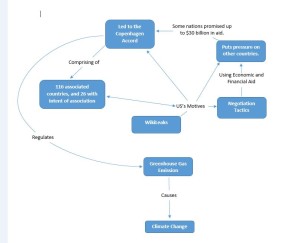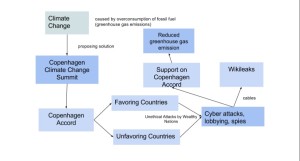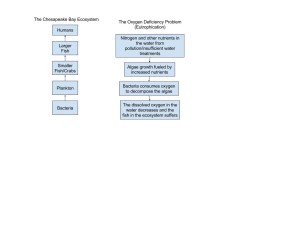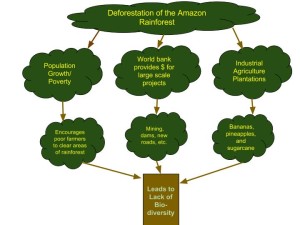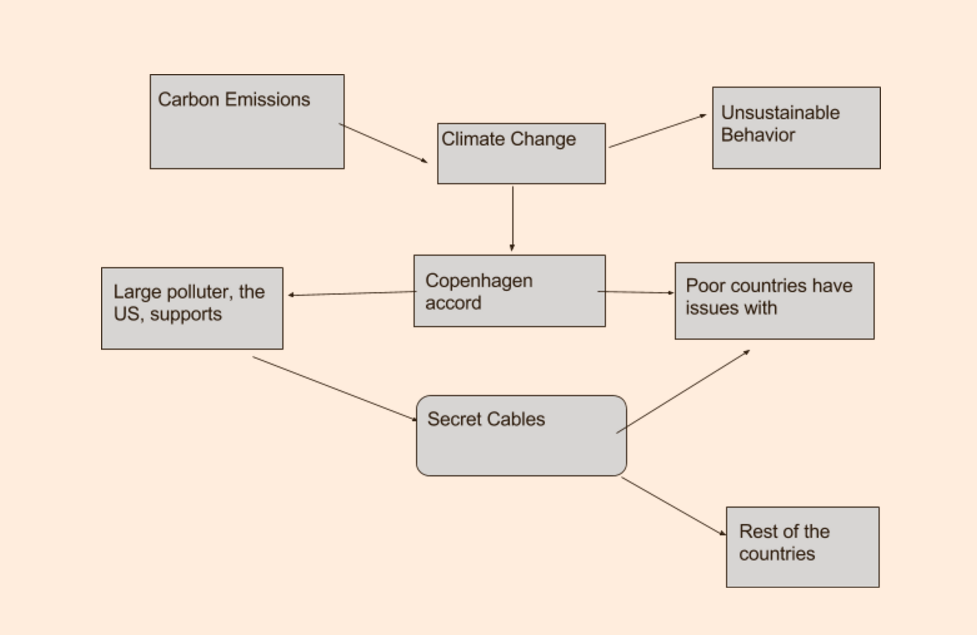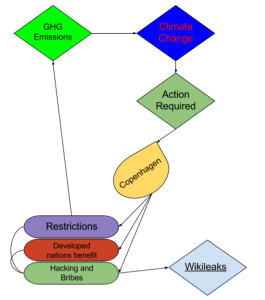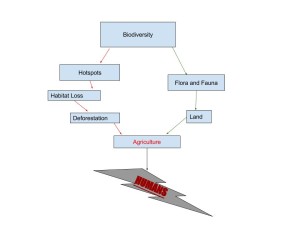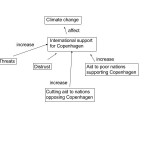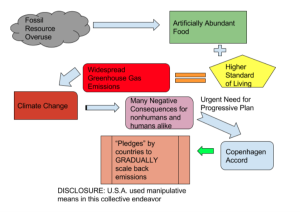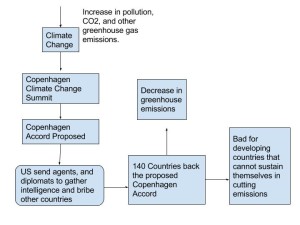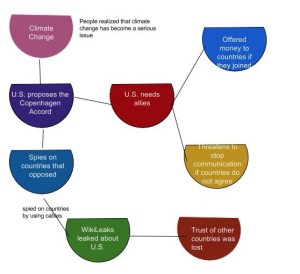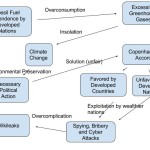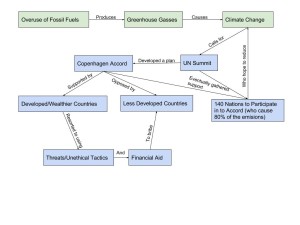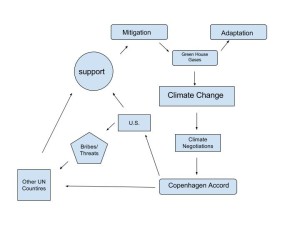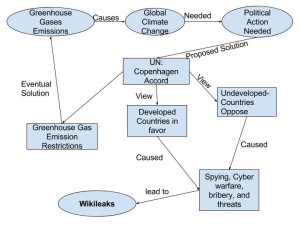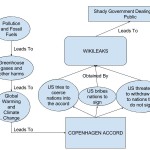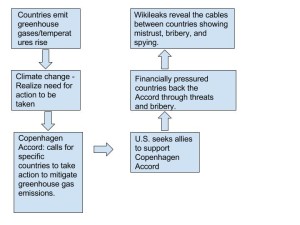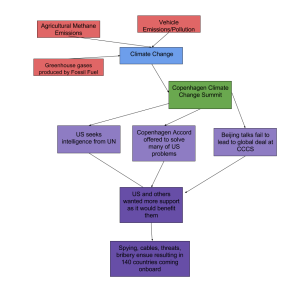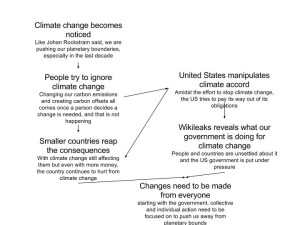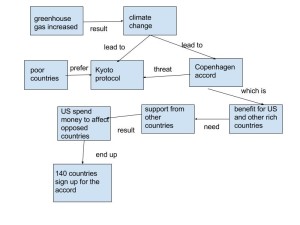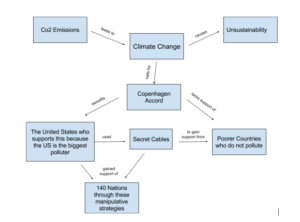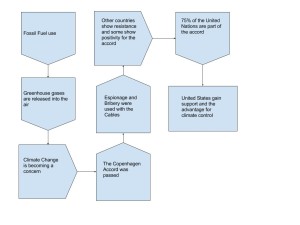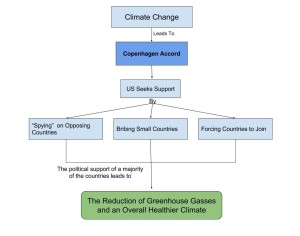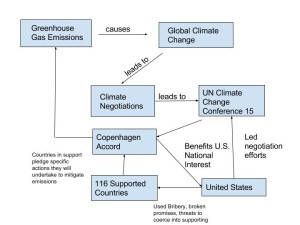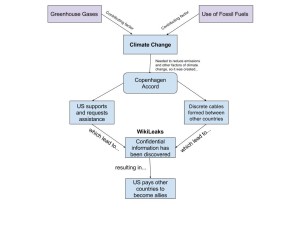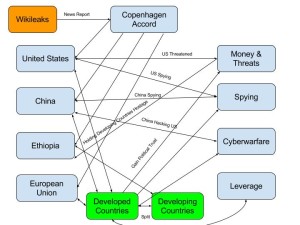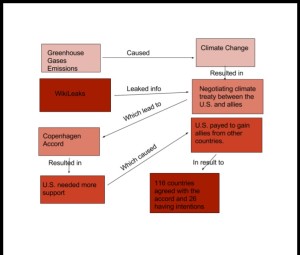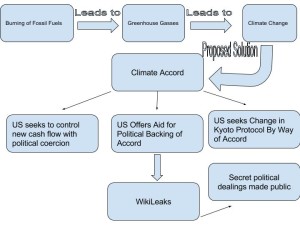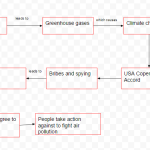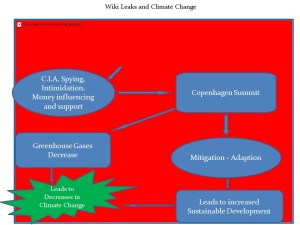After reading through the article, I tried my best to explain my understanding of the article into a systems diagram. Since the article itself is on the WikiLeaks, I kept that part right in the center. I feel it draws more attention to the reader and shows that it is the focal point of the diagram by sitting in the middle. From there, I have an arrow pointing towards US motives, which later emphasizes on their negotiation chips they used with other nations. The reason I have multiple arrows coming out from “US’s Motives”, is to explain the relationship between everything. I feel US’s motives had a strategical negotiation tactic which also put pressure on other nations to be associated with the Copenhagen Accord. So in order to illustrate that, I have an arrow going to each one of those box items. The section where it states that some nations were being pressured is basically emphasizing on the fact that economic and monetary incentives were used to get them on board. This eventually led to 116 countries being associated with the Copenhagen Accord, and 26 more still with the intent on being on board. The arrow to the far left that curves around the diagram itself is illustrating that the accord regulates greenhouse gas emissions which ultimately leads to climate change.
I personally believe that climate change is a major issue for everyone in the world to worry about. Just speaking from personal experiences alone is enough to think about climate change. This winter we experienced days with over 70 degrees, and now in April, we’ve gotten snow and below freezing weather. That just isn’t normal. I personally don’t think the climate change diplomacy is being handled properly. After reading the article, it’s almost like the poorer are being exploited to join the wealthier nations in their views if they believe in them or not. The best approach to climate change issues should be a global one. Where everyone puts their minds together, and tries to identify the main source of issues and work together in fixing it. At the end of the day, climate change will affect the entire world, not just the poorer nations.

